Continuing with my earlier theme of art that inspires me, here is another example from the ancient world. During Egypt’s Roman period (c. 30 BCE – 330 CE), many beautiful portraits were made in and around the area of Faiyum (or Fayum). They were mummy portraits, which means that they were attached to mummy wrappings to cover the mummy’s head.
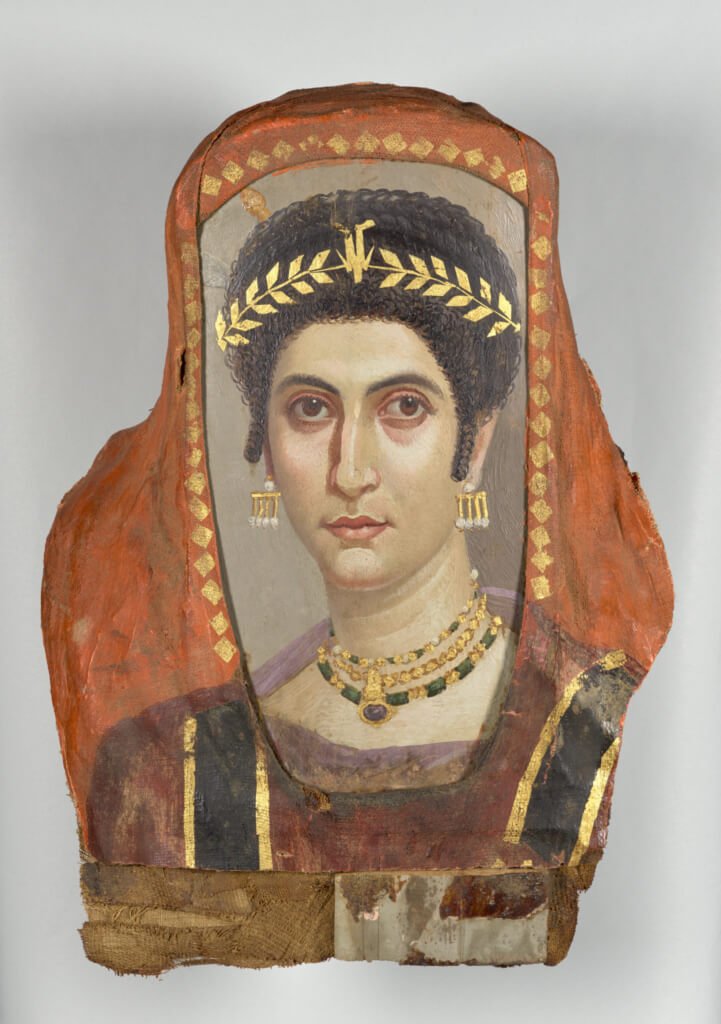
I love these paintings for all of their expressiveness. They give such a sense of their having been a real, individual human being behind each face. I particularly love the big, soulful eyes. As you may notice, every subject’s eyes are a bit bigger than they probably would have been in real life. This gives them an ageless and timeless appearance. Those big eyes look directly at the viewer, creating a real feeling of connection.
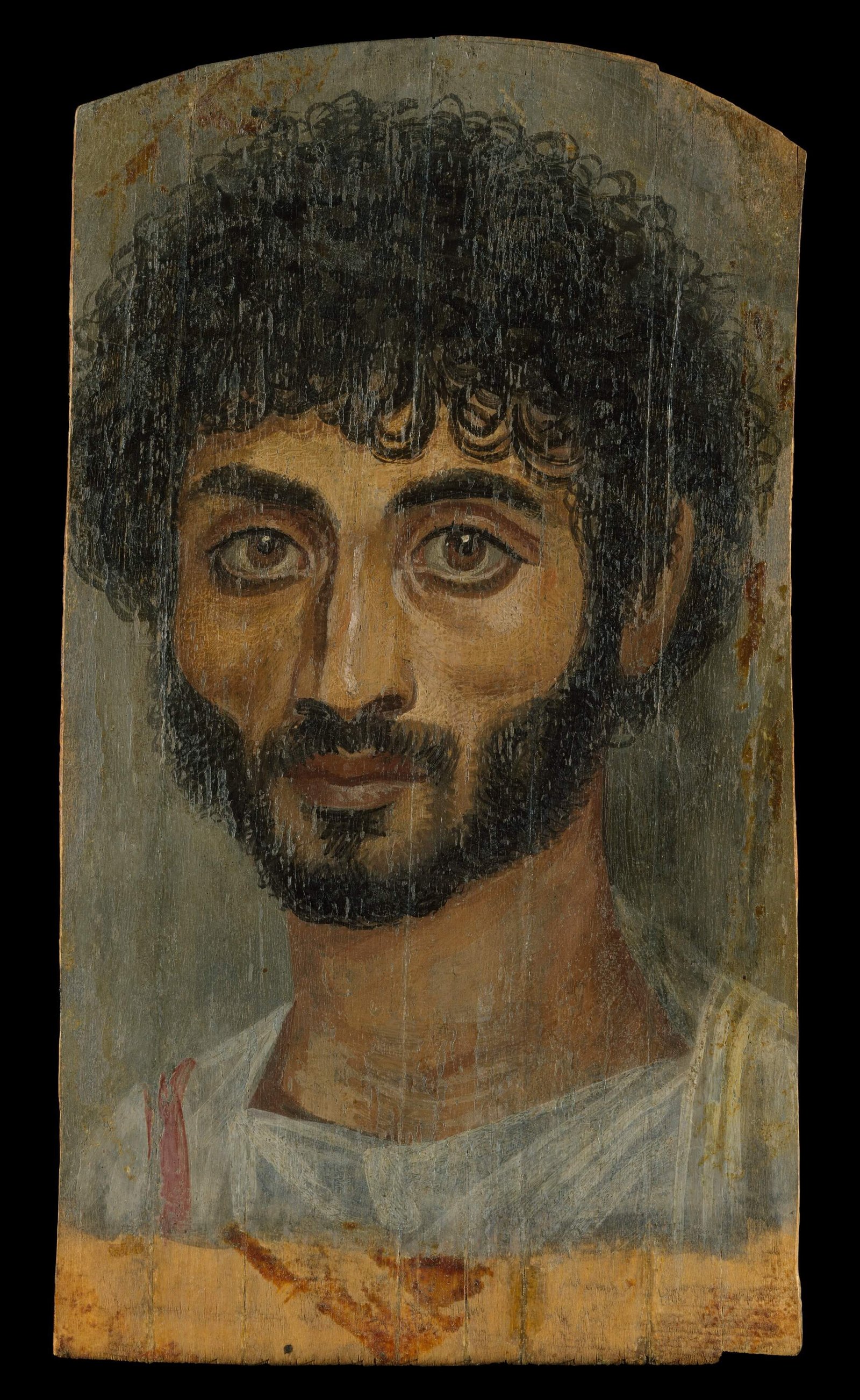
In case you’re wondering why everybody in the Faiyum died ageless and attractive, the answer is that they didn’t. It’s believed that people had these portraits painted well in advance of their deaths so that they could appear at their best. All of them are well groomed, and many of the women wore their finest hairstyles and jewels for the occasion. Some men and women wear gold wreaths in their hair.
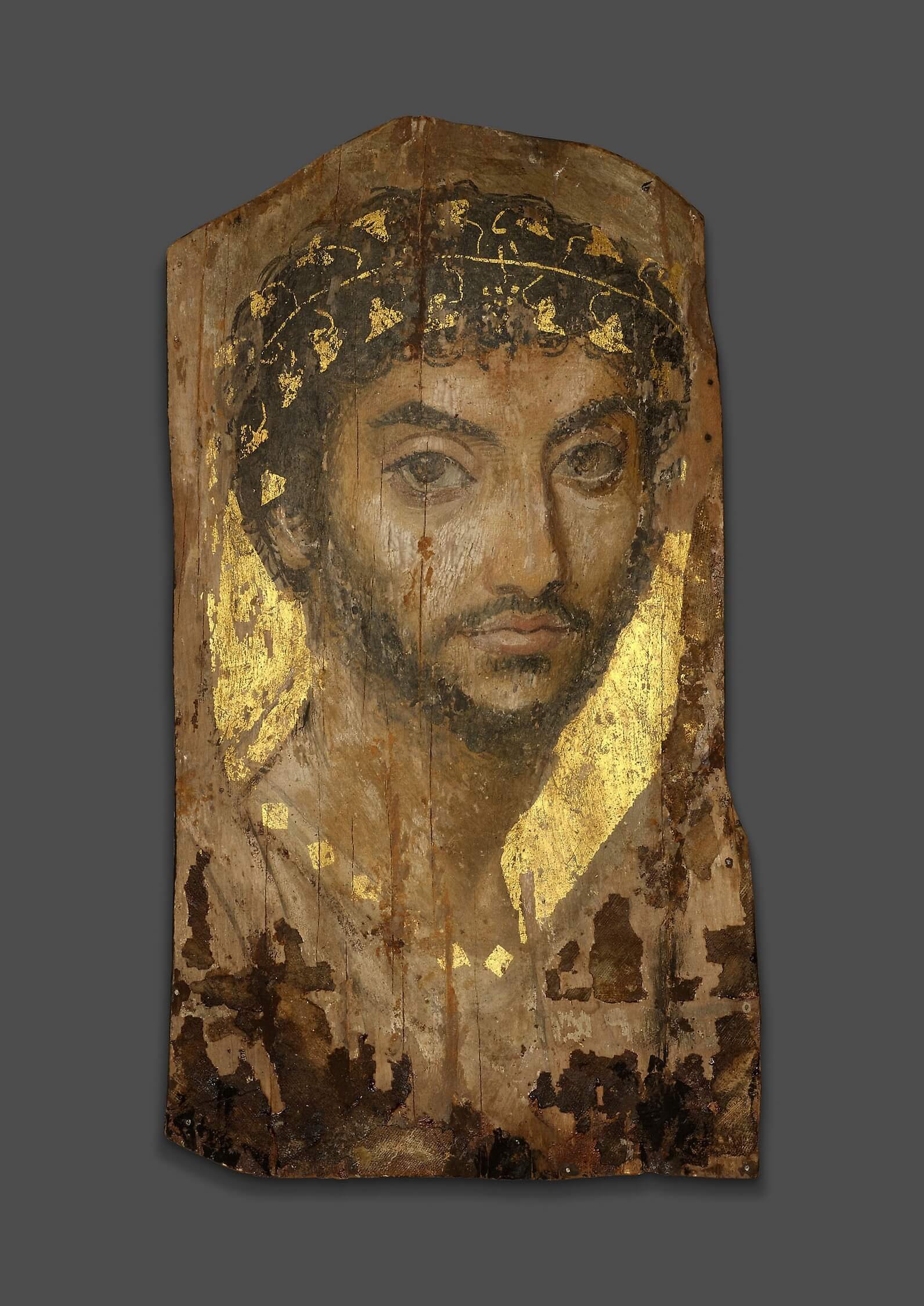
These portraits are small, but they’re extremely compelling in person. They are very shiny and luminous, and it can sometimes look as though light is actually coming from within. This is due to the use of encaustic, a paint made up of pigments in wax. As artist Y. Z. Kami astutely points out (see link below), it’s thanks to encaustic that these portraits are so well preserved after as long as two full millennia.
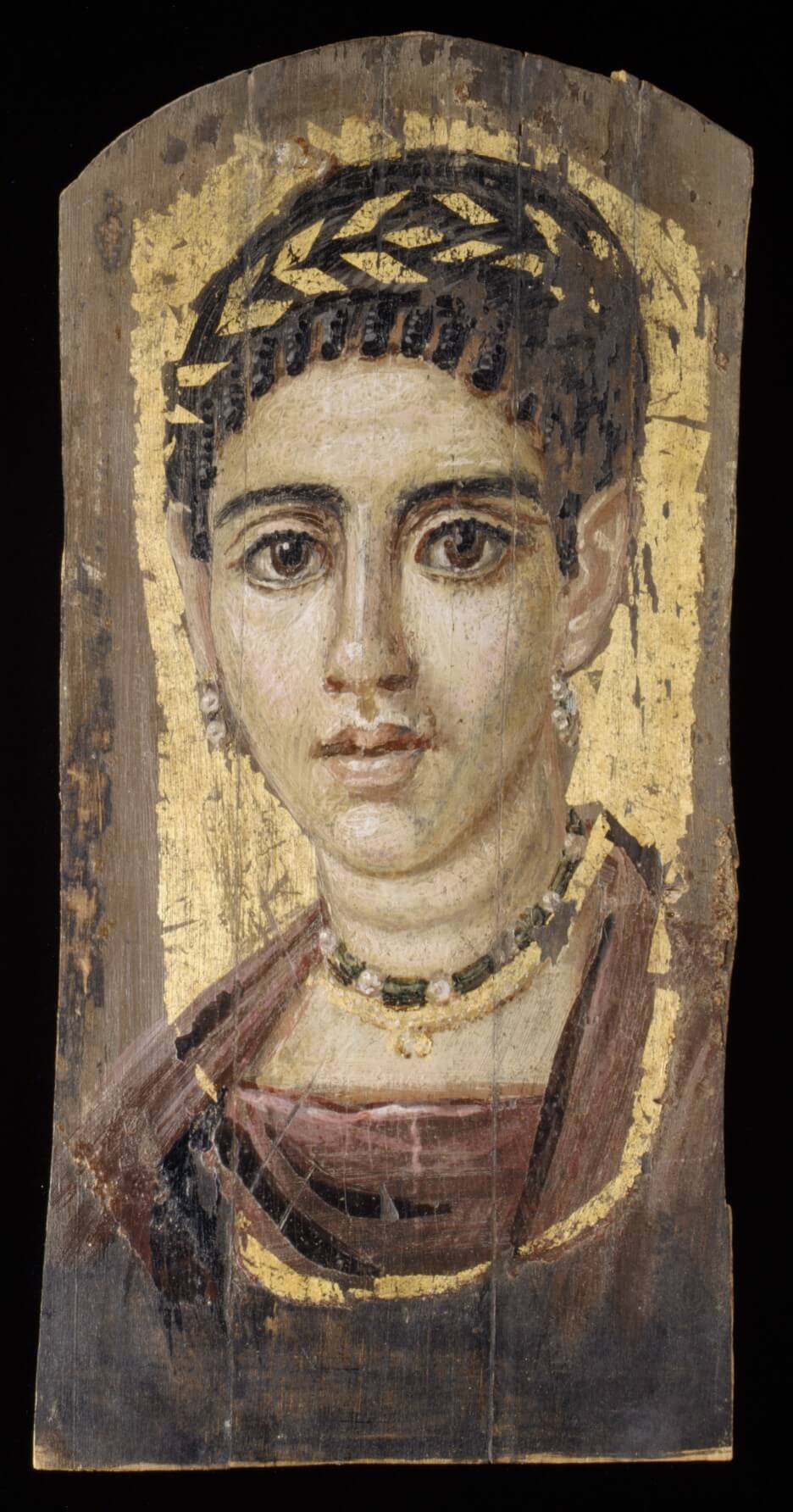
The portraits are irregular in shape with rough edges because they were tucked into the mummy wrappings. Because of this, you can’t easily forget that they were originally created to be death masks. It can bring up some strong feelings when you realize that all of these individuals whose expressive faces you’re looking at are dead. If that thought upset you, remember that these works were likely painted years before they were needed, while the sitters had plenty of life left in them.
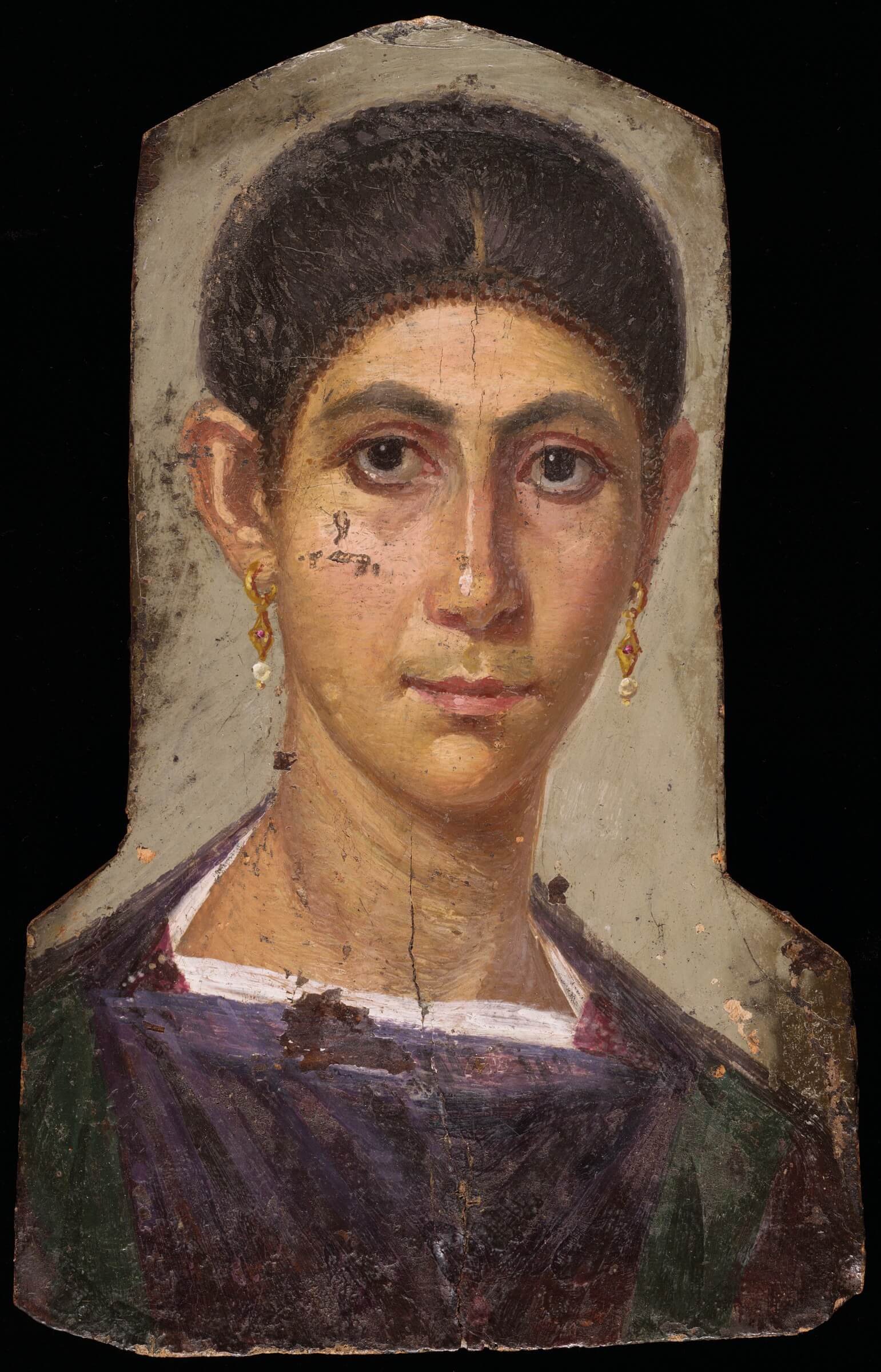
Faiyum portraits are plentiful, so you can see examples at many major museums around the world. I’ve seen them at the Met, the Louvre (I believe), and in several other places. If you’re interested in learning more, you can read about Faiyum mummy portraits at DailyArt Magazine and at the Metropolitan Museum of Art. Also, enjoy contemporary Iranian portrait painter Y. Z. Kami’s great video about Faiyum mummy portraits for the Met’s The Artist Project.

